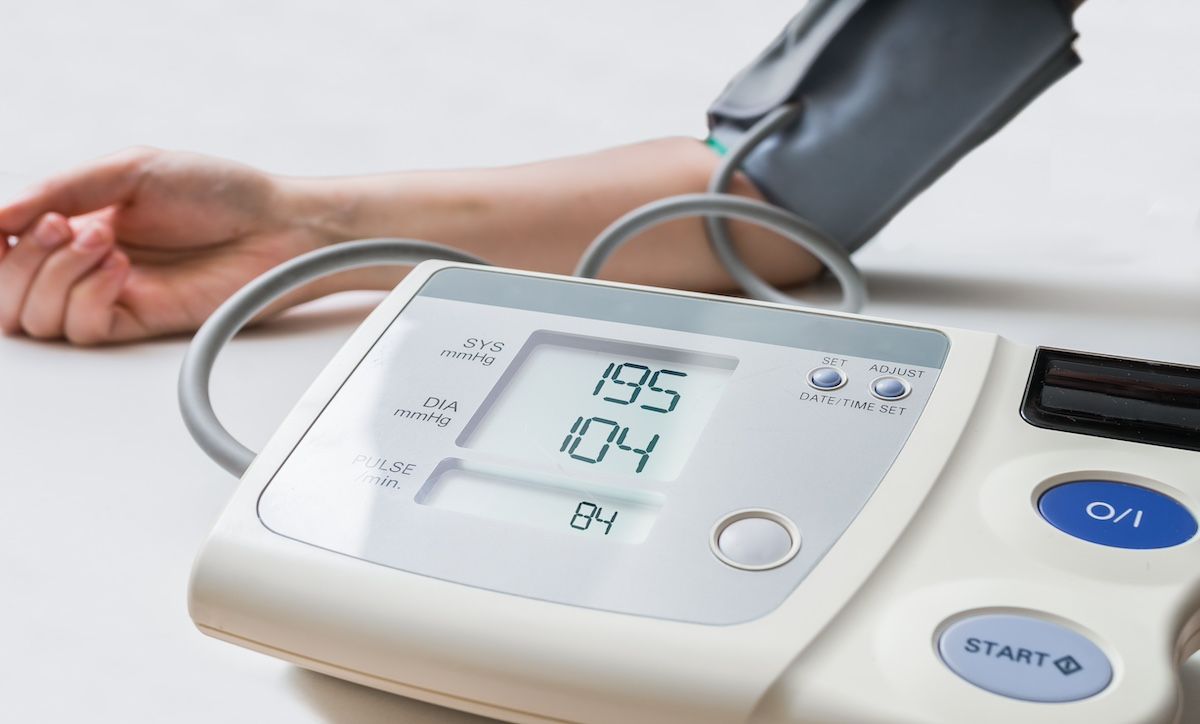- Center on Health Equity & Access
- Clinical
- Health Care Cost
- Health Care Delivery
- Insurance
- Policy
- Technology
- Value-Based Care
Reducing Time Sitting Can Help Lower BP in Older Adults, Randomized Trial Finds
The randomized trial found that reducing sitting time over a 6-month period was association with reduced systolic blood pressure (BP) among a group of older patients with obesity and high rates of hypertension.
Cutting the amount of time spent sitting can help reduce blood pressure for older patients at higher risk for cardiovascular disease, according to study findings published in JAMA Network Open. The randomized trial found that reducing sitting time over a 6-month period was associated with lower systolic blood pressure (SBP) among a group of older patients with obesity and high rates of hypertension.
A patient’s blood pressure is measured with a digital monitor | Image Credit: © vchalup - stock.adobe.com

“This may be because we recruited participants at high risk of hypertension and aimed to reduce sitting time as well as decrease prolonged sitting. Perhaps given a population with higher cardiovascular risk, small changes in sitting patterns were sufficient for improving BP,” the researchers noted. “The promising finding of no significant effect modifiers indicated that people with lower physical function or physical activity or with chronic conditions, such as type 2 diabetes, can reduce their sitting time and reap BP benefits. Decreased sitting could serve as a gateway to more physical activity as people gain strength and confidence.”
The study included 283 patients who were part of a Washington state health care system; half were randomly assigned to a sitting reduction intervention program and the other half were assigned to receive general healthy living tips, thus serving as controls. Patients undergoing the sitting reduction intervention received 10 health coaching sessions, sitting reduction goals, a standing desk, and fitness tracker. Half of patients had hypertension, and the mean body mass index (BMI) was 34.9.
After 6 months, the mean change in sitting time—the study’s primary outcome—decreased significantly more among those receiving the intervention, dropping by approximately a half hour (31.85 minutes) daily. This drop correlated with a drop in SBP of 3.48 mm Hg, which favored the intervention group (95% CI, −6.68 to −0.28; P = .03). The difference in SBP, noted the researchers, was comparable to that observed with physical activity (4 mm Hg), the Dietary Approach to Stop Hypertension diet (5.2 mm Hg), and weight loss (3 mm Hg).
“Our finding that sitting was reduced by approximately 31 minutes per day is slightly lower than others have found and did not meet the study goal of a reduction of 2 hours per day. A Cochrane review of interventions to reduce sitting in older adults, including 7 randomized clinical trials, found an overall reduction of approximately 45 minutes per day, favoring intervention groups. In addition, most of our participants were affected by COVID-19 pandemic restrictions,” noted the researchers, who recruited patients between 2019 and 2022. “Furthermore, the amount of sedentary behavior reduction needed to confer health benefits is not known.”
Patients enrolled in the study during COVID-19 had a greater mean reduction in sitting time (−40.25 min; 95% CI, −65.39 to −15.11; P = .04), although reductions in SBP were similar between those enrolled before (−3.75 mm Hg; 95% CI, −7.27 to −0.23; P = .27) and those enrolled during (−3.41 mm Hg; 95% CI, −9.47 to 2.66; P = .04) the pandemic.
Among secondary and exploratory outcomes, the researchers observed that the intervention was associated with statistically significant increases in time standing and decreases in prolonged periods of sitting. There were no statistically significant differences by weight, BMI, or waist circumference.
Adverse events were reported by 87 patients receiving the intervention and 57 controls. More patients in the intervention group than in the control group had musculoskeletal events (35 vs 19) and skin disorders (9 vs 1). There were 6 serious adverse events in both groups, none of which were study related.
Reference
Rosenberg D, Zhu W, Greenwood-Hickman M, et al. Sitting time reduction and blood pressure in older adults: a randomized clinical trial. JAMA Netw Open. 2024;7(3):e243234. doi:10.1001/jamanetworkopen.2024.3234
